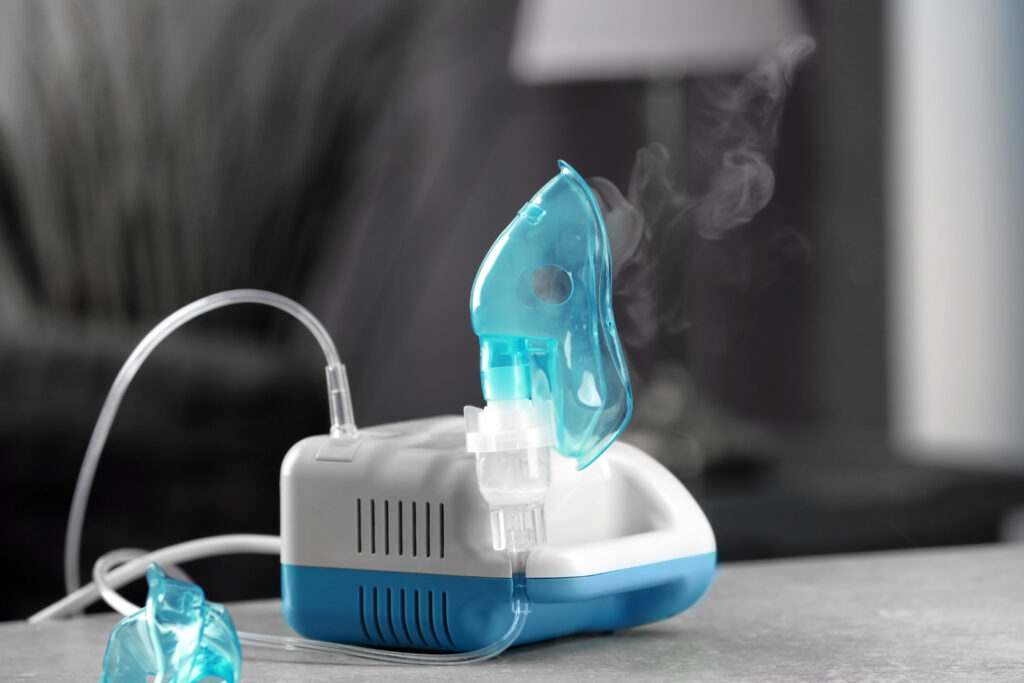
Chronic Obstructive Pulmonary Disease (COPD) affects more than 6% of the population and causes breathing problems which can be difficult to manage.
The best COPD inhalers can help you manage your symptoms and stay healthy, as well as save money.
1. Ventolin HFA Inhaler
Ventolin HFA Inhaler is one of the most sought-after asthma inhalers. It works by dispensing albuterol into the air for use.
This inhaler can help treat or prevent sudden breathing difficulties associated with bronchospasm (tightening of muscles surrounding airways). It's approved for use in adults and children aged four years or above.
Exercise-induced bronchospasm in people with asthma. This form of bronchospasm typically occurs during physical activities like running or cycling, making use of preventives like these especially important.
2. Ventolin Suppressor Inhaler
Ventolin Suppressor inhalers are considered the go-to choice when it comes to quick relief of COPD symptoms. Not only are they affordable options on the market; their cool designs also make them stand out.
The device is constructed of durable plastic and boasts an innovative, redesigned lid to keep dust and dirt out of the system. Furthermore, there is an attached counter which counts how many inhalations sessions have taken place.
Asthma can be difficult to manage, but you can help by taking an active part in its care. Talk to your physician about ways you can maximize treatment effectiveness.
3. Asthma and Allergy Inhaler
The Asthma and Allergy Inhaler contains medications designed to alleviate symptoms associated with asthma, such as coughing, wheezing, chest tightness and shortness of breath. These treatments should be used alongside avoiding triggers as well as other treatments to ensure maximum effectiveness.
These medications open airways by relaxing muscles in your lungs to ease symptoms. These medicines, called bronchodilators, should be taken one or two times each day depending on your symptoms.
These medicines take effect quickly to relieve worsening symptoms or stop an asthma attack in progress, and are known as quick-relief bronchodilators or SABAs.
4. Cyclosporine Inhaler
Cyclosporine (Modified) is a prescription medicine prescribed to treat certain forms of inflammation (e.g. rheumatoid arthritis and psoriasis). This type of immunosuppressant belongs to a class known as immunosuppressants.
These medications help to prevent organ rejection in recipients of kidney, liver or heart transplants. Additionally, these drugs have also proven helpful for relieving symptoms associated with rheumatoid arthritis in some individuals who haven't found relief through other therapies.
Inhaled cyclosporine is being researched as a potential treatment for bronchiolitis obliterans syndrome, an extremely painful chronic disease affecting some recipients of bone marrow/blood stem cell or lung transplants. According to researchers, inhaled cyclosporine may provide greater efficacy than oral immunosuppressive drugs in treating this condition.
5. Beta-Agonist Inhaler
Beta-agonists are among the most frequently prescribed medications to treat and manage breathing conditions, often in combination with other therapies. These medicines, available in varying forms and sizes, work by binding to beta receptors located throughout your body.
Beta-agonists come in many varieties, from short-acting and long-acting inhalants to those that work by changing liquid medicine into fine mist for easier inhalation. Nebulisers make these medications particularly suitable for frequent lung users as their liquid medicine becomes mist, making inhalers an easy choice to take daily.
6. Corticosteroid Inhaler
Corticosteroids, also referred to as glucocorticoids or steroids, are used on an ongoing basis to manage asthma and chronic obstructive pulmonary disease (COPD) symptoms. Corticosteroids reduce airway inflammation by blocking multiple activated inflammatory genes and suppressing airway contractions.
They can be very effective in controlling asthma, reducing exacerbations, and improving quality of life. Furthermore, they may prevent irreversible airway changes as well as decrease mortality associated with COPD.
Metered-dose inhalers (MDIs), dry powder inhalers and nebulizers are used to administer medications directly into the lungs. Metered-dose inhalers utilize an aerosolized propellant and administer an exact dosage directly into each lung.
7. Nebulizer
Nebulizers are commonly used to treat asthma and COPD. A nebulizer distributes medication in the form of a mist, making breathing it directly into your lungs easy and providing fast relief from respiratory symptoms.
Nebulizers use air pressure, oxygen, compressed gas or ultrasonic power to break liquid medication down into small aerosol droplets that can be inhaled easily. Nebulizers are often used with sterile saline solution and antibiotics as treatment for asthma or other respiratory conditions.
Nebulizers are easy to use, making them suitable for young children or those with limited hand mobility. Furthermore, using one can save both money and trips to the emergency room.





